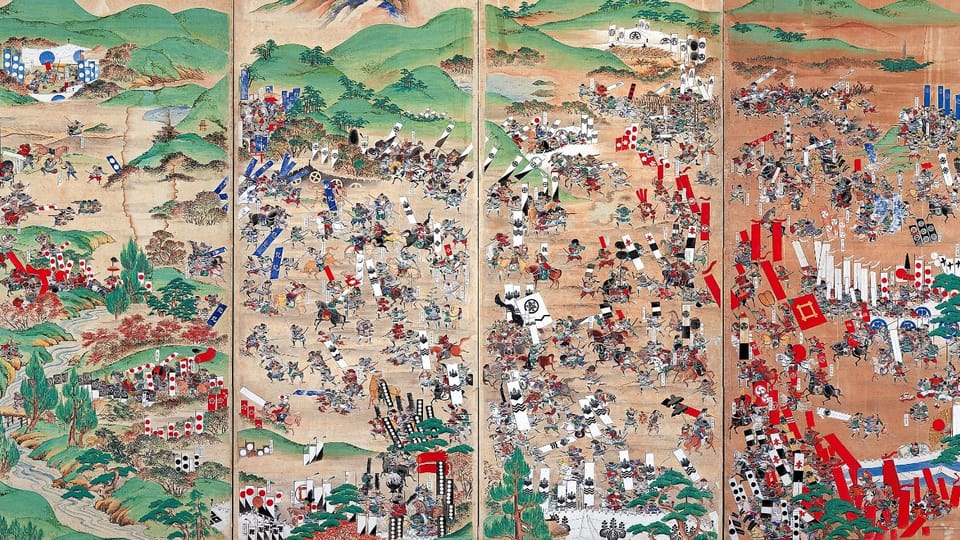Swords and Schemes: The Battle of Sekigahara and the Dawn of Tokugawa Rule

October 21, 1600. A day that rewrites the playbook on Japanese history. The Battle of Sekigahara, when samurais from the east and west throw down in a clash that’s not just about slicing through enemy lines, but cutting deep into the future of Japan itself.
Now, rewind a bit. Japan’s been riding a rollercoaster of power plays, kicked off by big shots like Oda Nobunaga and sealed by Toyotomi Hideyoshi, who had the whole country eating out of his hand by 1590. But when Hideyoshi bites the dust in 1598, it leaves a gaping hole at the top. He leaves behind a kiddo, Hideyori, and a gang of regents supposed to keep the throne warm. But one of these regents, Tokugawa Ieyasu, isn’t just sitting around twiddling his thumbs—he’s scheming, relocating, marrying off relatives to stitch together alliances. Classic power move.
Enter Ishida Mitsunari, smelling trouble and not liking the scent. He sees Ieyasu’s maneuvers as a direct threat to the Toyotomi legacy. So, what does he do? He rounds up a posse of western daimyō and sets the stage for an epic showdown at Sekigahara, right smack in the heart of Honshu. It’s a lineup split straight down the middle: Ieyasu’s eastern daimyō versus Mitsunari’s western warriors, with a few curveballs like Uesugi Kagekatsu shaking things up.
Cut to the main event. The battlefield’s a chessboard, with Ieyasu and Mitsunari maneuvering their pieces across key castles and routes. It’s all gearing up to this mega clash enveloped in a thick, mysterious fog—like something out of a ghost story. The stage is set, and the air’s crackling with the promise of betrayal and bloodshed.
Just as the swords start swinging, the plot twists—Kobayakawa Hideaki, one of Mitsunari’s supposed aces, flips sides mid-fight. This betrayal’s like a domino knocking down the rest, and suddenly Mitsunari’s strategy is about as useful as a screen door on a submarine. The western alliance crumbles, and Ieyasu’s boys start slicing through their ranks like a hot knife through butter.
When the dust settles, Ieyasu isn’t just picking up his teeth with broken fingers; he’s moving fast, grabbing castles, and tying up loose ends—like executing Mitsunari. He’s not just winning battles; he’s playing the long game. By 1603, he’s got the emperor’s blessing as shōgun, and the Tokugawa shogunate is born, ready to keep Japan on the straight and narrow for the next 260 years.
So, there you have it. The Battle of Sekigahara isn’t just another skirmish—it’s the big bang of the Tokugawa era, setting up a new order that’ll shape Japan’s political, cultural, and social landscape for centuries. In the grand tapestry of Japanese history, this battle’s a blood-red thread weaving through the whole damn thing.
